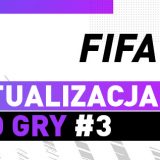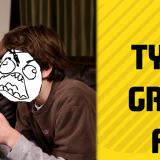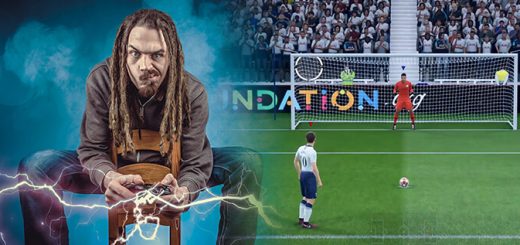Hidden Symbols of Justice in Video Game Narratives
Building upon the foundational exploration of Divine Justice and Symbols in Modern Games, this article delves deeper into the nuanced ways video game creators embed hidden symbols of justice within their narratives and environments. These subtle cues serve not only as artistic devices but also as moral signposts, guiding players to interpret complex themes of morality, fairness, and divine order beneath the surface. Understanding these symbols enhances the player’s engagement and deepens the moral reflection prompted by the gaming experience.
1. Recognizing Subtle Justice Symbols in Video Game Environments
a. Visual motifs and environmental cues that subtly convey themes of justice
Video games often utilize visual motifs such as scales, blindfolds, and divine statues to evoke notions of justice. For instance, in the game God of War, the recurring presence of statues representing gods and moral judgment subtly reminds players of divine oversight. Similarly, environmental cues like balanced architecture or symmetrical layouts reflect moral equilibrium or imbalance, hinting at underlying justice themes without explicit narration.
b. The use of architecture, lighting, and color to symbolize moral judgment
Architectural elements, such as towering temples or decrepit courthouses, often symbolize moral authority or corruption. Lighting plays a crucial role; bright, focused illumination may signify purity or divine favor, while shadows and darkness can symbolize moral ambiguity or evil. For example, in BioShock Infinite, the contrasting use of light and shadow underscores themes of moral judgment and the ambiguity of justice.
c. How background details reflect underlying justice narratives
Background details like statues of weighing scales, religious iconography, or ancient scripts embedded in environments subtly reinforce themes of divine or moral justice. These elements engage observant players in deciphering the moral fabric of the game’s universe, such as the recurring motifs of balance and judgment present in The Witcher 3 series.
2. Character Archetypes as Embodiments of Justice in Gameplay
a. Heroes, anti-heroes, and villains as symbolic representations of moral dichotomies
Character archetypes often embody different facets of justice. Heroes may symbolize righteous judgment, while anti-heroes challenge traditional morality, prompting players to question justice’s nature. Villains, conversely, may act as distorted mirrors of justice, highlighting moral corruption. For example, in Mass Effect, the protagonist’s choices reflect varying justice paradigms, from utilitarian to deontological.
b. The significance of character design elements that hint at justice themes
Design elements such as armor, weapons, and posture serve as visual cues. A character adorned with scales or blindfold motifs may symbolize impartiality and divine justice, like the Watchers in Destiny 2. Conversely, asymmetrical or corrupted designs can represent moral discord, emphasizing the fluidity or challenge of justice.
c. Evolution of character morality and its visual or narrative symbolism
Character development often mirrors evolving justice perceptions. A hero starting with black-and-white morality may develop nuanced shades, reflected in costume changes or dialogue that subtly question justice. In Horizon Zero Dawn, Aloy’s evolving morality aligns with her understanding of justice beyond black-and-white paradigms.
3. Narrative Devices and Storytelling Techniques Revealing Justice
a. Flashbacks, symbolism, and allegorical storytelling to embed justice themes
Games utilize flashbacks and allegories to subtly explore justice. In Dark Souls, environmental storytelling and item descriptions serve as allegories of moral judgment and consequence, encouraging players to interpret moral truths beneath the surface.
b. The role of dialogue choices and moral dilemmas in exposing hidden justice symbols
Dialogue systems often encode justice themes; choices may appear morally ambiguous but carry deeper symbolism. In The Last of Us Part II, player decisions influence not only the story but also embody different justice philosophies, subtly encouraging reflection on moral righteousness.
c. Use of mythological and religious references to deepen justice symbolism
Incorporating mythological references like the scales of Maat or the blindfolded Lady Justice deepens moral symbolism. For example, Hades features mythological underpinnings that symbolize divine judgment and the pursuit of justice beyond mortal understanding.
4. The Interplay Between Player Agency and Justice Symbols
a. How player decisions activate or reveal hidden justice motifs
Player agency often determines the manifestation of justice symbols. In Vampire: The Masquerade – Bloodlines, moral choices influence the game’s moral landscape, revealing underlying justice frameworks that challenge player assumptions.
b. The design of moral systems that reflect underlying symbolic justice frameworks
Many games implement moral systems, such as alignment meters or karma, which serve as visual representations of justice. These systems often encode cultural or mythological justice principles, subtly guiding player perception and behavior.
c. Impact of player perspective on interpreting justice-related symbols
Player perspective can alter the interpretation of symbols; what appears as justice in one context may be viewed differently from another. This relativism aligns with complex divine justice concepts discussed in the parent article.
5. Cultural and Mythological Layers of Justice Symbols in Games
a. Cross-cultural symbols and their reinterpretation within game narratives
Symbols like the scales of justice, the phoenix, or the serpent are reinterpreted across cultures. For example, the phoenix in Assassin’s Creed symbolizes rebirth and moral renewal, echoing divine justice themes.
b. Mythological references as hidden justice cues (e.g., scales, blindfolds, divine adjudicators)
Mythological icons such as Maat’s scales or the blindfolded Lady Justice serve as visual shorthand for fairness and divine judgment. In God of War, gods and mythic figures embody moral authority and divine justice, subtly reinforcing these themes.
c. The influence of religious symbolism on modern game justice representations
Religious symbols influence game design, often to evoke moral authority. For instance, the depiction of angels or divine judges in Bayonetta reflects religious themes of justice and divine decree, adding layers of moral symbolism.
6. Subtle Subversions of Justice Symbols and What They Reveal
a. Games that challenge traditional justice symbols to provoke critical thought
Some titles deliberately subvert justice symbols to question moral assumptions. In Spec Ops: The Line, the imagery of justice is deconstructed to challenge the player’s moral certainties.
b. Examples of visual or narrative subversions that question moral assumptions
Narrative subversions, such as villains wielding symbols of justice or heroes betraying moral ideals, deepen the moral complexity. For example, Spec Ops uses disturbing imagery to critique the concept of moral righteousness.
c. How subversion deepens understanding of justice beyond surface symbols
These subversions encourage players to look beyond surface symbols, fostering critical engagement with justice as a multifaceted concept intertwined with morality, culture, and divine principles.
7. Psychological and Emotional Effects of Hidden Justice Symbols on Players
a. How subconscious recognition of symbols influences player morality and empathy
Subtle symbols can evoke subconscious moral judgments, influencing empathy and ethical decision-making. Recognizing divine scales or blindfolds triggers moral reflection without explicit awareness, deepening emotional engagement.
b. The role of ambiguity in justice symbols to evoke introspection
Ambiguous symbols—such as fractured statues or shadowed figures—prompt players to question moral certainty, fostering introspection aligned with divine justice’s complex nature.
c. Emotional engagement through layered symbolism in game storytelling
Layered symbolism, combining visual, narrative, and interactive elements, enhances emotional resonance, making the moral dilemmas and justice themes more impactful and memorable.
8. Connecting Hidden Symbols Back to the Concept of Divine Justice
a. How subtle justice symbols in games echo the divine justice themes from the parent article
Many hidden symbols in games serve as microcosms of divine justice, reflecting the parent article’s themes of moral balance, divine oversight, and moral consequence. These symbols act as visual echoes of divine judgment, reinforcing their importance in moral storytelling.
b. The reflection of divine justice principles through nuanced visual and narrative cues
Nuanced cues like divine scales, angelic figures, or blindfolded judges evoke divine justice principles—impartiality, moral righteousness, and divine oversight—allowing players to intuitively grasp these complex ideas beyond explicit narration.
c. Final thoughts: bridging the recognition of hidden symbols with broader divine justice concepts
By deciphering these subtle symbols, players develop a deeper understanding of divine justice as an intricate moral order. This bridging of visual and narrative cues fosters a richer appreciation of how games serve as modern mythologies echoing age-old principles of divine morality.

















1 Odpowiedź
[…] purchase within the next 30 days, enabling proactive targeting. Tools like Amazon SageMaker or open-source frameworks like TensorFlow facilitate scalable deployment of these […]